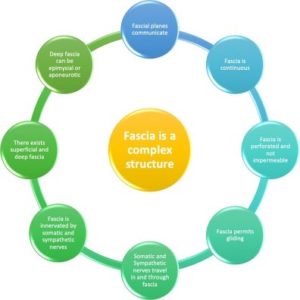Questo mese il tema portante della nostra newsletter sarà quello dei blocchi di fascia in cardiochirurgia. Il tema è molto attuale, e come vedete è argomento di discussione anche nella rivista online ufficiale della American Society of Anesthesiologists (ASA) dove è stata appena pubblicata questa interessante intervista:
https://doi.org/10.1097/01.ASM.0000737124.92835.9d
Di seguito invece due recenti lavori, tutti italiani, dei quali raccomandiamo la lettura:
Capuano P, Toscano A, Rinaldi M, Brazzi L. Ultrasound-guided thoracic wall nerve blocks in cardiac surgery: has the best yet to come? Minerva Anestesiol. 2020 Oct 15. https://pubmed.ncbi.nlm.nih.gov/33054024/
Sepolvere G, Tedesco M, Fusco P, Scimia P, Cristiano L. Fascial plane blocks in cardiac surgery: a future to discover. Minerva Anestesiol. 2020 Dec 17. https://www.minervamedica.it/en/journals/minerva-anestesiologica/article.php?cod=R02Y2021N03A0382
Questo mese la rivista che propone gli articoli più interessanti, a nostro parere, è Anesthesia & Analgesia.

Doveroso inoltre segnalare questa review appena pubblicata su “Anaesthesia” della quale riportiamo l’abstract
Chin KJ, Versyck B, Pawa A. Ultrasound-guided fascial plane blocks of the chest wall: a state-of-the-art review. Anaesthesia. 2021 Jan;76 Suppl 1:110-126. https://pubmed.ncbi.nlm.nih.gov/32239539/
Summary
Ultrasound-guided fascial plane blocks of the chest wall are increasingly popular alternatives to established techniques such as thoracic epidural or paravertebral blockade, as they are simple to perform and have an appealing safety profile. Many different techniques have been described, which can be broadly categorised into anteromedial, anterolateral and posterior chest wall blocks. Understanding the relevant clinical anatomy is critical not only for block performance, but also to match block techniques appropriately with surgical procedures. The sensory innervation of tissues deep to the skin (e.g. muscles, ligaments and bone) can be overlooked, but is often a significant source of pain. The primary mechanism of action for these blocks is a conduction blockade of sensory afferents travelling in the targeted fascial planes, as well as of peripheral nociceptors in the surrounding tissues. A systemic action of absorbed local anaesthetic is plausible but unlikely to be a major contributor. The current evidence for their clinical applications indicates that certain chest wall techniques provide significant benefit in breast and thoracic surgery, similar to that provided by thoracic paravertebral blockade. Their role in trauma and cardiac surgery is evolving and holds great potential. Further avenues of research into these versatile techniques include: optimal local anaesthetic dosing strategies; high- quality randomised controlled trials focusing on patient-centred outcomes beyond acute pain; and comparative studies to determine which of the myriad blocks currently on offer should be core competencies in anaesthetic practice.
In particolare ci hanno colpito tre articoli che segnaliamo di seguito:
OPEN MIND: THE OPEN MIND
Fascial Plane Blocks: More Questions Than Answers?
Black, Nick D. MB BCh BAO, FRCA*; Stecco, Carla MD†; Chan, Vincent W. S. MD, FRCPC‡
Author Information
Anesthesia & Analgesia: March 2021 – Volume 132 – Issue 3 – p 899-905
https://journals.lww.com/anesthesia-analgesia/Citation/2021/03000/Fascial_Plane_Blocks__More_Questions_Than_Answers_.38.asp

Il primo articolo, alla firma dell’irlandese Nick Black, vede come coautori Vincent Chan, uno dei più importanti e premiati riferimenti per l’anestesia locoregionale nel mondo, assieme alla Professoressa Carla Stecco, orgoglio tutto Italiano, forse l’autorità mondiale principale, quando si parla di sistema fasciale umano. Il loro lavoro ci illustra come siamo ben lontani dal poter considerare i blocchi di fascia come una metodica scientificamente validata. Raccomandiamo senz’altro la lettura, fonte di molti spunti di riflessione e di ricerca.
OPEN MIND: THE OPEN MIND
Perioperative Lidocaine Infusion: Does the Risk Outweigh the Benefit?
Weinberg, Guy L. MD
Author Information
Anesthesia & Analgesia: March 2021 – Volume 132 – Issue 3 – p 906-909
https://pubmed.ncbi.nlm.nih.gov/33438966/
Il secondo articolo è opera di Guy Weinberg, forse non noto a tutti, ma è grazie a lui se abbiamo le soluzioni lipidiche nei nostri protocolli per la gestione della tossicità sistemica da anestetici locali.
Nel suo articolo Weinberg mette in risalto come, con lo scopo di ridurre il consumo degli oppioidi, considerati pericolosi, si stia diffondendo l’utilizzo della lidocaina endovenosa. Tale pratica, allo stato attuale significa evitare un rischio ben noto e gestibile legato agli oppioidi, con un rischio assolutamente imprevedibile e non quantificabile, legato alla ancora scarsa conoscenza della farmacologia degli anestetici locali per via endovenosa. Anche qui le riflessioni sono doverose.
PAIN AND ANALGESIC MECHANISMS
Comparison of Liposomal Bupivacaine and Conventional Local Anesthetic Agents in Regional
Anesthesia: A Systematic Review
Jin, Zhaosheng MBBS*; Ding, Olivia MD†; Islam, Ali BE‡; Li, Ru PhD*; Lin, Jun MD, PhD*
Author Information
Anesthesia & Analgesia: February 24, 2021 – Volume – Issue – 10.1213/ANE.0000000000005406 https://journals.lww.com/anesthesia-analgesia/Abstract/9900/Comparison_of_Liposomal_Bupivacaine_and.88.aspx
Abstract
BACKGROUND:
Pain is one of the most common adverse events after surgery. Regional anesthesia techniques are effective for pain control but have limited duration of action. Liposomal bupivacaine is a long-acting formulation of bupivacaine. We conduct this systematic review to assess whether liposomal bupivacaine may prolong the analgesic duration of regional anesthesia compared to conventional local anesthetic agents.
METHODS:
We systematically searched PubMed, Cochrane Central Register of Controlled Trials (CENTRAL), EMBASE (Ovid), Cumulative Index to Nursing and Allied Health Literature (CINAHL), Google Scholar, Web of Science citation index, US clinical trials register, and recent conference abstracts for relevant studies.
RESULTS:
We identified 13 randomized controlled trials that compared the use of liposomal bupivacaine to conventional local anesthetics in regional anesthesia. There were 5 studies on transversus abdominis plane (TAP) block, 3 of which reported longer duration of analgesia with liposomal bupivacaine. One study reported comparable analgesia with liposomal
bupivacaine TAP block compared to TAP block catheter. There were 3 studies on brachial plexus block, 2 of which reported
that liposomal bupivacaine may provide longer analgesia. Studies on other techniques did not report significantly longer
analgesia with liposomal bupivacaine.
CONCLUSIONS:
Currently, there is limited evidence suggesting that liposomal bupivacaine provides longer analgesia than conventional local anesthetics when used in regional anesthesia. The analyses of multiple studies on liposomal bupivacaine for TAP blocks and brachial plexus blocks have yielded conflicting results. As a result, no definitive conclusions can be drawn about its efficacy compared to plain bupivacaine.
___________________________________________________________________________________
